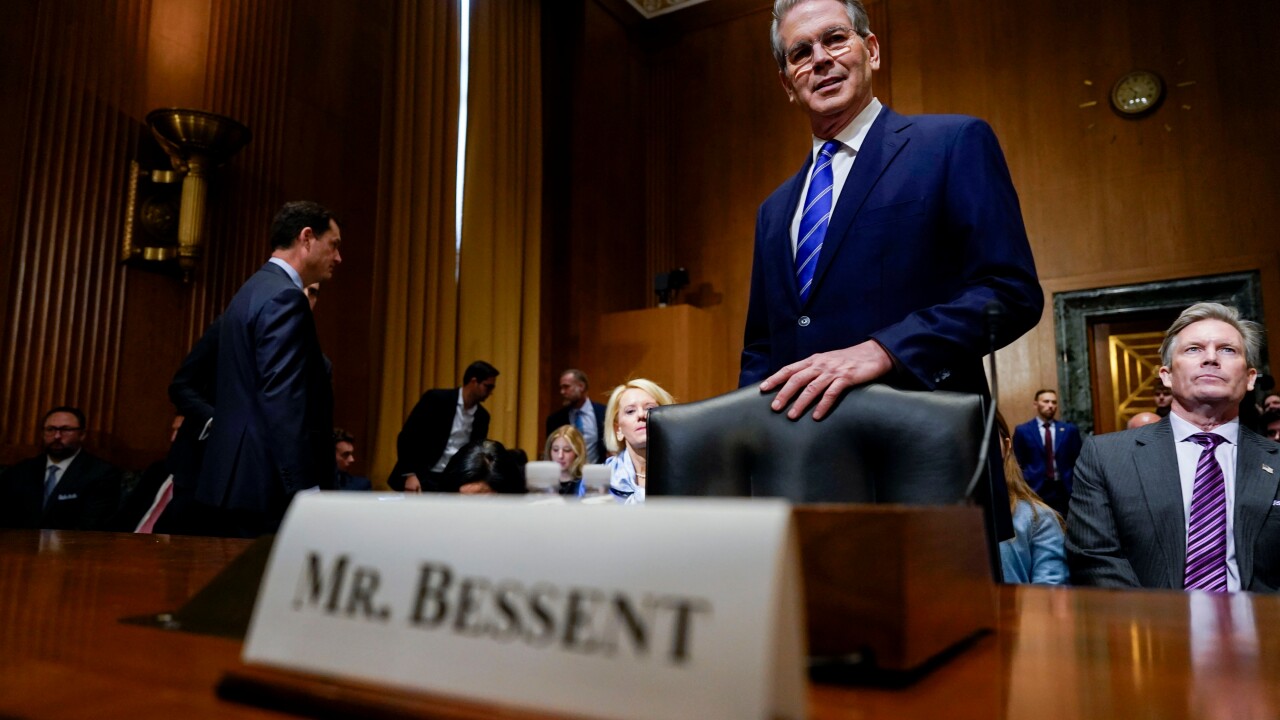-
During an event in Washington, Brian Moynihan touched on the regulatory environment as well as technological innovations like the distributed ledger that are changing the banking industry.
June 13 -
WASHINGTON Despite banker arguments that post-crisis financial reforms are damaging the health of the financial industry, Federal Deposit Insurance Corp. Chairman Martin Gruenberg sought Wednesday to paint a different picture, citing evidence that banks are doing well.
June 15 -
New community banks chartered in the years before the crisis tended to open in less-concentrated markets, according to a Federal Deposit Insurance Corp. working paper released Tuesday.
May 3
Bank of America Chief Executive Brian Moynihan's
Moynihan said he wouldn't recommend that investors launch a new bank due to the industry's excessive regulatory burdens and dominance by large institutions like his. In other words, the banking industry's barriers to entry have become so impenetrable that they completely rule out new competitors entering the market.
The data shows that investors are indeed being boxed out of the industry. Regulators have approved just two de novos since 2011, compared with an average of 100 new banks formed per year since 1990, according to the
The question, then, is what can be done to re-energize investment in new bank charters. Moynihan himself points to the answer: tiered and proportional regulations. As he notes, community banks are overburdened by needlessly excessive regulation that is disproportionate to their size and risk.
Streamlined Rules for Main Street
Federal regulators made a down payment on easing entry barriers when the
That means regulatory changes that will have a substantial and noticeable impact on Main Street institutions, including reforming the call report, easing restrictions on raising capital, raising asset thresholds, and even rolling Consumer Financial Protection Bureau rules into the decennial EGRPRA review.
Unfortunately, in response to a congressional inquiry, the federal banking agencies
Meanwhile, numerous bills pending in Congress would do much to roll back the excessive regulatory burden facing community banks. House Financial Services Committee Chairman
Strict Oversight of Wall Street
Of course, the flip side of tiered and proportional regulation is appropriate oversight of the nation's largest and riskiest financial institutions. There is
Nevertheless, there is no shortage of support for common-sense regulatory relief for community banks. By advancing reforms to help existing community banks promote economic growth and encourage the entry of new institutions into the industry, Congress and the financial regulators can right many of the wrongs in our nation's banking system.
Camden R. Fine is president and CEO of the Independent Community Bankers of America.





